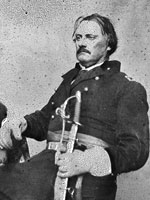The National Institute for Literacy promotes national literacy in all its forms—from reading, writing, and speaking proficient English to on-the-job problem solving. The institute conducts research and makes existing scholarly research accessible for the non-specialist.
The institute's website is extremely simple to navigate, and breaks its content down into four sections: adult, adolescence (high school and middle school), childhood, and birth to early childhood.
Let's start in the adolescence section. Focal points for this age include fluency, vocabulary, and text comprehension. So, now you know the major national issues for literacy in roughly grade 7-12. What can you do about it? Try giving the tips for teaching literacy in any classroom (even non-language arts settings) a glance. If you have time on your hands, the most in-depth information available is in What Content-Area Teachers Should Know About Adolescent Literacy. This .pdf file describes decoding, morphology, fluency, vocabulary, text comprehension, reading assessment, writing, motivation, and diverse learners. Each section includes typical age-bracket difficulties and suggestions for addressing the topic at hand in any subject area's classroom.
Childhood covers grades K-3. A .pdf file, Put Reading First: The Research Building Blocks for Teaching Children to Read, covers each area in greater depth. The lessons could easily be applied to teaching any subject, since reading and vocabulary content are applicable to all fields.
Maybe you have a student that you unfortunately cannot invest more time in specifically, and his or her parents are concerned with his or her reading level? Maybe you aren't really sure how to best address students with learning disabilities? If either scenario hits home, try the site's literacy directory. Select the demographic of concern (adult, children, learning disabilities, etc.), enter your zip code and acceptable driving distance, check a learning need, and—voila—you now have a listing of nearby literacy programs.





